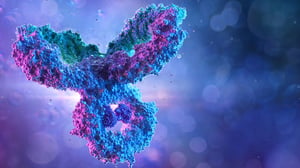Researchers at Zurich University Hospital have inserted instructions into a virus to help it reach the tumour and prompt it to generate a molecule which in turn eradicates the tumour.
The mechanism used for AstraZeneca and Johnson & Johnson’s anti-Covid vaccines (along with Russian vaccine Sputnik V and China’s CanSino) may also be used to develop new treatments for cancer.
How does it work?
An adenovirus which has been rendered harmless (using various techniques) is modified in the laboratory to carry a series of genetic instructions that help counteract a given illness. In the case of Covid, the virus contains a segment of DNA inserted by genetic engineers which prompts our body’s cells, when voluntarily infected with the vaccine, to produce the now-infamous protein Spike of the SARS-CoV-2 coronavirus (which, as we all now know, causes Covid), even though the actual coronavirus is not present.
These Spikes protein (which are harmless) created by our cells trigger the alarm in our immune system, which sees them as intruders and develops antibodies against them. If the coronavirus should then subsequently appear, it would be easy for the body’s defence system to identify it - thanks to the Spikes - and eliminate it.
The same technique used against Ebola
A similar mechanism has also been used for the two vaccines approved against Ebola, and to combat some rare genetic diseases: in this case, however, the section of DNA inserted into the viral carrier (or vector, to use the technical term) is not used to sound the immune system’s alarm, but instead to prompt the cells to make the missing proteins, or replace defective ones (rare genetic illnesses often come about due to the absence, or malfunction, of a protein).
As we were saying, thoughts have now turned to doing something similar against tumours, using the viral vector to take instructions into cancerous cells, prompting the cells to produce a drug (a monoclonal antibody) which will then destroy them.
It is the brainchild of researchers at Zurich’s University Hospital, who published the results of their work in PNAS magazine.
The Swiss academics inserted the instructions for producing trastuzumab (a monoclonal antibody already successfully used against some forms of breast cancer) into the genetic code of an adenovirus similar to the one used in the anti-Covid vaccines. The technique was used in experiments on laboratory animals.
The virus quickly penetrated the tumour cells, which then produced a vast amount of trastuzumab: the antibody concentrations were in fact 1,800 times higher than those recorded when the monoclonal antibody is injected straight into the tumour (an approach which is not normally adopted: trastuzumab is generally administered intravenously, making the process even slower).
This makes for a far more powerful effect, leading to less side effects for healthy tissues which are not reached by the trastuzumab, a fact the researchers verified using a highly specific technique known as PACT.
A highly versatile platform
The method developed by the oncologists at Zurich University Hospital has been named SHREAD (from SHielded, REtargetted ADenovirus), and looks set to be a highly versatile “platform”: depending on the genetic material inserted into the virus, the academics will be attempting to obtain results against other types of tumours or microorganisms.
The platform might well offer a decisive new approach which speeds up treatment, enhancing effectiveness whilst at the same time reducing the toxicity of healthy tissues.

